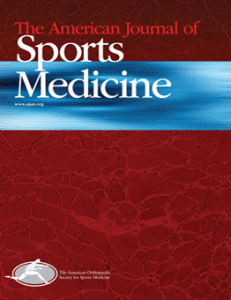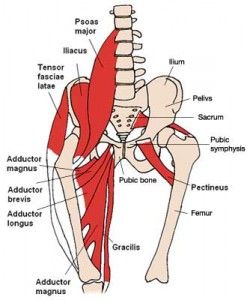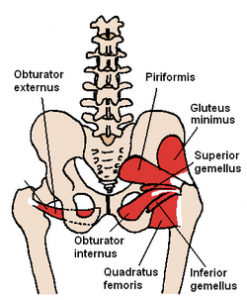Brian Schiff’s Blog
Injury Prevention, Sports Rehab & Performance Training Expert
Manufacturers tout the benefits of compression stockings by telling runners they improving running performance via aiding or increasing venous blood return. They assert that the compression around the calves increases the calf muscle pump mechanism thereby increasing end-diastolic volume and cardiac output during exercise and allowing for higher intensity output. However, research to date has not supported this assertion.
Running a marathon presents a large physical challenge as a runner needs more than 30,000 foot strikes to finish a 26.2 mile race. Studies to date have revealed that compression stockings may reduce muscular vibrations and oscillations in the calf with prolonged running. They may also help decrease subjective feelings of pain following exercise bouts, but the use of them is still controversial as science also suggests they do not alter running performance.
A recent study in the Journal of Orthopaedic and Sports Physical Therapy sought to investigate the benefit of wearing graduated compression stockings for running pace, prevention of muscle damage and maintaining muscle performance during a real marathon race. They had 34 experienced runners (running at least 5 years and completed no less than 3 marathons) take part int he study: 17 in the control group wore socks, while 17 runners wore foot-to-knee graduated compression stockings.
Runners were excluded if they were on medications in the 2 weeks prior to marathon, suffered a musculoskeletal injury in the 3 months prior to competition, and not completing the marathon. The stockings were commercially available (NRG Energy – Medilast Sport) and covered from the foot to the inferior pole of the patella with graduated pressure.
Participants were given a pair of stockings 2 weeks before the marathon and encouraged to wear them at least 3x prior to race day. Forty eight hours prior to the race a blood sample was taken, O2 saturation was measured, lower leg volume was assessed and maximum countermovement jump height was assessed. On race day, participants wore their selected garments and were not given any instructions about food or drinking, while running at their own pace. The same measurements taken pre-race were again measured following the race.
Results
- Total race time similar between groups
- Average running pace similar throughout the race
- Change in body mass during the race was similar
- Perceived exertion and lower limb soreness the same immediately after the race
- At 24 hours post-race soreness was reported to be less in stockings group, but this difference was no longer present at 48 hours
- Blood and serum responses were not different between groups
- Blood markers for muscle damage revealed no differences between groups in pre-race and post-race values
- Lower leg volume and countermovement jumps decreased in both groups after the race and no statistical differences or benefits to wearing the compression stockings
Summary
The use of compression garments in experienced runners is an ineffective strategy to reduce muscle damage over the course of a marathon. Further, they do not reduce immediate post-race perceived soreness, nor do they increase performance compared to those runners wearing socks. This is the first study to look at garments in a real race covering this distance. Additional studies should be done to look at the impact of these garments on novice or less experienced half and full marathoners.
If you want more information on how to prevent injuries, resolve common running related pains and maximize your running, be sure to check out my comprehensive guide at www.FitForRunning.com.
Reference: The use of compression stockings during a marathon competition to reduce exercise-induced muscle damage: are they really useful? Areces F et al. J Orthop Sports Phys Ther. 2015 Jun;45(6):462-70.
I am pleased to announce that my new e-book on overcoming knee injuries and maximizing running performance is now available! As someone who has run 4 half-marathons, a full marathon and several 5Ks, I know firsthand how frustrating an injury can be. Perhaps worse than the injury itself, is the fear of re-injury when every step brings trepidation in the back of your mind that the same pain could come back at any moment.
Over the course of my fitness and therapy career, I have worked with hundreds of runners ranging from beginners to competitive runners. Many have been sidetracked by anterior knee pain and IT Band Syndrome. While there is no way to prevent all injuries, I have found that learning to assess the body and incorporate corrective strategies to eliminate asymmetries and imbalances along with proper conditioning allows individuals to run faster, longer and relatively injury free.
Up to 50% of all lower extremity injuries with runners involve the knee. I have been working on a manual that summarizes my approach to injury prevention, rehab and training for runners. You see, many people are not really fit to run when they start running. If more people knew how to detect potential issues and train adequately to prepare their bodies to run, injury rates would decrease and performance would subsequently increase.
As such, I wrote Fit For Running: Overcome Knee Injuries and Maximize Performance. This 70 page e-book covers assessment, stretching, strengthening, soft tissue mobilization, plyometric training and injury recovery guidelines. It focuses on preparing the human body for optimal performance – a manual for physical readiness if you will. It is perfect for runners of all ages and abilities, running coaches and fitness trainers working with runners.
While my book aims to target knee pain, it really offers considerable knowledge and insight that would help a runner with any overuse injury. Given the proportion of knee injuries, I chose to focus the injury/rehab portion of the manual on this topic.
Click Here to download a free sample and learn more about this great new resource.
I returned from a Disney vacation with my family last week. While there, I saw all the runners who had just finished the marathon. Several of them had compression socks and I was inspired to write today’s blog.
In 2009, I wrote a blog post on soleus strains, the Anatomy of a Soleus Injury. It is a widely read post about a commonly misdiagnosed issue and brings many inquiries as to how to solve this condition that plagues runners. One question I often get is will compression socks help? Over the past few years, I have seen a proliferation in the use of compression socks in the recreational running community.

But what exactly do these garments do? Some of the proposed benefits are:
- Improved oxygen delivery to muscles
- Faster lactic acid resolution
- Prevention of muscle cramping
- Better stabilization of the lower leg leading to improved muscle efficiency
- Enhanced venous return to the heart through a more efficient calf muscle pump, leading to increased endurance capacity
- Diminished muscle fatigue resulting from more compact muscles, leading to improved balance and proprioception
What does science have to say about compression garments. I performed a literature search for relevant articles pertaining primarily to runners and endurance activity. Below are some links to recent research abstracts:
– Physiological effects of wearing graduated compression stockings during running
– Compression stockings in male runners
– Impact on high intensity exercise in hot conditions
– Effect on 400 m sprint performance
– Impact on endurance running performance
– Effect of graduated compression stockings on running performance
– Calf compression sleeves and impact on oxygen saturation/running performance
In summary, much of the research we have no seems to tell us the following things:
- Compression garments do not yield any measurable performance advantages
- Runners prefer low compression socks over mod/high levels for comfort
- Recovery does appear to be aided with compression in terms of improved venous flow and O2 saturation
- No specific studies on gastroc/soleus muscle strains/rehab strategies using the socks
There is no conclusive evidence that these garments will prevent muscle strains, but research does indicate that perceived exertion is lower and the psychological impact of wearing the garment may aid runners. I have not tried these myself, but some of my clients swear by them. The idea of supporting/compressing soft tissue is certainly not new and many find some comfort in it. We need more studies specific to injured populations to accurately evaluate the impact on those recovering from gastroc/soleus strains.
With that said, I am in favor of any modality that may allow athletes to train and compete with more confidence and less perceived exertion even if there is no direct measurable performance gain. While I will stop short of endorsing these compression socks, I do see some potential benefits for those coming back from an injury in terms of recovery that warrant some consideration until they resume their prior levels of activity pain free. For runners suffering from muscle injuries, utilizing soft tissue mobilization, stretching, strengthening, and proper running progression is still a an absolute must.
Let me start off by saying I have the privilege to assess and treat many avid runners on a weekly basis. Some of them are triathletes and others just dedicated runners. While the age and experience level varies, I see more female runners in all.

Recently, a woman in her mid thirties came in for PT after being referred by a physician’s assistant (PA) with a working diagnosis of hip flexor tendinitis. She had developed pain running in the past few weeks. It was now at a level preventing her from running despite using NSAIDS to reduce inflammation.
Specifically, she complained of increased pain with figure 4 sitting, difficulty and pain getting up from a chair, and increased pain with running. Her pain level at the eval was 2/10 but went as high as 9/10 with running. Lots of things can cause pain in the hip joint.

Summary of clinical findings:
- Poor single leg stance on the involved hip with mild pain
- No leg length discrepancy
- Subtle antalgic gait
- AROM for hip and L-spine are within normal limits
- No pain with quad or hip flexor stretching
- Manual muscle testing reveals 5/5 strength for hip flexion (SLR and seated), abduction and adduction
- Pain with FABER testing
- Positive hip impingement sign
- Pain with deep squat
I have been a bit behind on blogging as of late. I try to aim for one per week, but I also strive to deliver sound and relevant content. Additionally, I do not seek outside contributors so finding time to write can be tricky with work and family life too. So, forgive me for any apparent inconsistency in posting. Just know that I will always try to provide valuable content. Today’s post centers around an article in the July 2012 edition of AJSM.

My work at the Athletic Performance Center has provided me an increased opportunity to work with FAI and athletic hip injuries. This is an area of evolution and growth in our field, so I find it particularly interesting to see rationale and thought processes centering around the timing, contribution and selection of hip exercises for active patients/athletes.
This article comes from the Steadman Philippon Research Institute in Vail, CO. The purpose of the study was to measure the highest activation of the piriformis and pectineus muscle during various exercises. The hypothesis was that highest pectineus activation would occur with hip flexion and moderate activity with internal rotation, whereas the highest activation with the piriformis would be with external rotation and/or abduction.


Methods: 10 healthy volunteers completed the following 13 exercises:
- Standing stool hip rotation
- Supine double leg bridge
- Supine single leg bridge
- Supine hip flexion
- Side-lying hip ABD with external rotation
- Side-lying hip ABD with internal rotation
- Side-lying hip ABD against a wall
- Hip clam exercise with hips in 45 degrees of flexion
- Hip clam exercise with hips in neutral
- Prone heel squeeze
- Prone resisted terminal knee extension
- Prone resisted knee flexion
- Prone resisted hip extension
All of these exercises have been reported to be used in hip rehab following arthroscopy or recovery from injury. The exercises were executed slowly and methodically with a metronome to reduce EMG amplitude variations.


